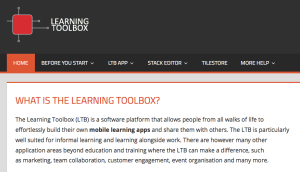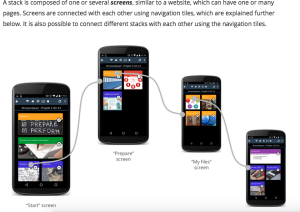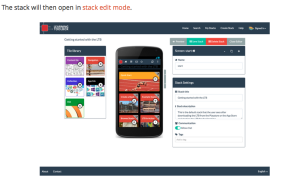Catching up with Learning Layers fieldwork – Part Three: Introducing Learning Toolbox to craft trade companies
With my previous posts I have been writing a series of blog entries to catch up with the fieldwork of our ongoing EU-funded Learning Layers (LL) project. After my sick leave I have been catching up with the recent fieldwork of the Construction sector pilot. In particular I have been interested in the news on the deployment of Learning Toolbox (LTB) – both in work-based learning and at construction sites. With my first post I summarised where we ended up with the introduction of the LTB before the summer break. With this second post I reported summarised recent feedback on the use of LTB by construction sector apprentices. In this third post I will give insights into the introduction of LTB to craft trade companies in construction sector.
Special challenges for Learning Toolbox in the work of electric engineering companies
At the end of June 2016 some members of the LL team of ITB visited the company Siever + Knüppel (one of our application partners) to discuss specific challenges that could be met with tools like LTB. So far our pioneering examples had been from the context apprentice training and project work on training sites. Dieter Siever (the director of the company specialised in electric engineering) gave us a manifold picture of unexpected incidences, changes of plans and potential mismatches between different trades involved in construction work and electric engineering in reparation and maintenance work. In the course of discussion we found several points in which the LTB could be adjusted to give support for necessary measures. A summary of these discussions is available in the following blog article:
Special challenges for using Learning Toolbox (LTB) in a craft trade company
Particular challenges for the use of Learning Toolbox in managing construction sites
Recently the Verden-based architect Thomas Isselhard (our application partner from the networks for ecological construction work) has got the responsibility to manage a special construction site in Verden. In addition to the complexity of ordinary construction sites there are special requirements from the perspective of maintaining cultural heritage (Denkmalschutz). In addition to this, the construction site is located next to a street that is used as open market area once a week (due to which there are restrictions to the work and transport).
Thomas had already made his experiences with testing the LTB. Therefore, he was keen to find out, how LTB would help him in supervising the craftsmen (from different trades and companies) involved in the work as well as managing the contacts with clients and other stakeholders (e.g. public authorities). Some members of the LL team of ITB have made a working visit to Verden to discuss this case with Thomas and are preparing demonstration materials with reference to this special case.
Workshop on the use of Learning Toolbox for craft trade companies in construction sector
The above mentioned working visits are closely related to the preparations (of the LL team of ITB and the LTB developers) for a workshop to introduce LTB for craft trade companies in Bremen region. This workshop will take place in ITB next week and we are looking forward to introduce the newest version of LTB there. Also, we want to collect similar exemplary cases from the companies to find out specific points of intervention. So, I assume that by the end of next week we have more to report from this front.
More blogs to come …



